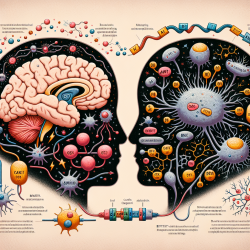Introduction
In the realm of speech-language pathology, our mission extends beyond addressing communication disorders; it encompasses fostering environments that empower children and promote equality. The research article "Water, sanitation and hygiene: measuring gender equality and empowerment" by Kayser et al. (2019) offers valuable insights that can be applied to our practice, particularly in creating equitable and empowering therapeutic environments.
Understanding the Research
The study highlights the critical intersection of water, sanitation, and hygiene (WASH) with gender equality and empowerment. It emphasizes that women and girls disproportionately bear the burden of inadequate WASH facilities, impacting their health, education, and overall well-being. This research underscores the importance of considering gender-specific needs and empowerment in WASH-related initiatives, which can be paralleled in our therapeutic practices.
Key Insights for Practitioners
As practitioners, we can draw parallels between the WASH sector and speech-language pathology by focusing on the following areas:
- Addressing Inequality: Just as the research identifies inequalities in WASH access, we must recognize and address disparities in access to speech-language services. This involves ensuring that all children, regardless of gender, socioeconomic status, or geographic location, have equitable access to quality therapy.
- Empowering Clients: Empowerment is a recurring theme in the research. In our practice, we can empower children by involving them in goal-setting, encouraging self-advocacy, and fostering a sense of agency in their therapeutic journey.
- Holistic Approach: The research emphasizes the interconnectedness of health, education, and empowerment. Similarly, our interventions should adopt a holistic approach, considering the broader social and environmental factors that influence a child's communication and overall development.
Encouraging Further Research
The research by Kayser et al. calls for further exploration of gendered aspects of WASH. In speech-language pathology, we can take inspiration from this by advocating for more research on gender-specific communication needs and the impact of societal factors on language development. Encouraging interdisciplinary collaboration can lead to a more comprehensive understanding of these issues.
Conclusion
Integrating the principles of gender equality and empowerment into speech-language pathology can lead to more inclusive and effective therapeutic outcomes. By drawing insights from the WASH sector, we can enhance our practice and contribute to the broader goal of creating equitable opportunities for all children.
To read the original research paper, please follow this link: Water, sanitation and hygiene: measuring gender equality and empowerment.










